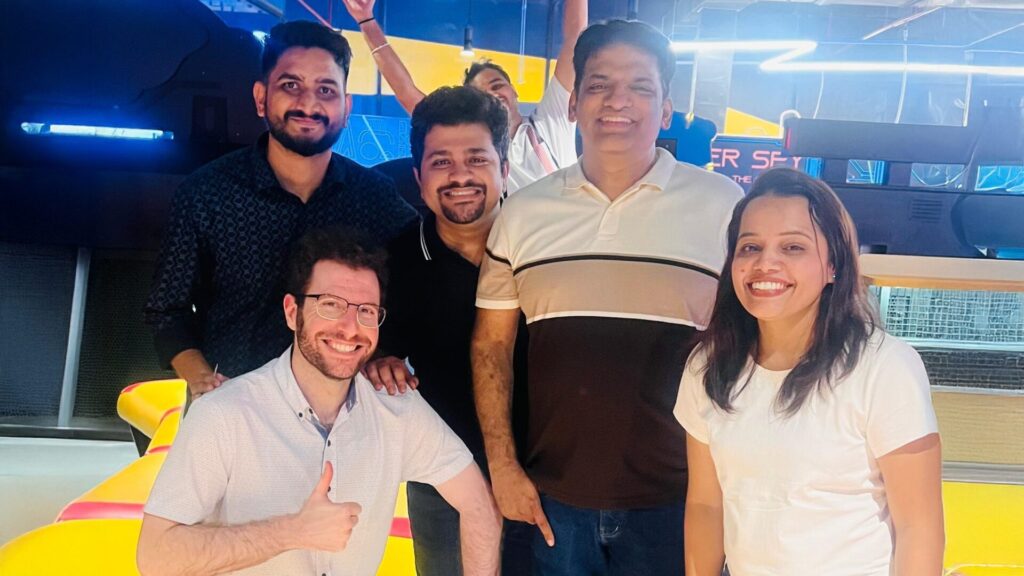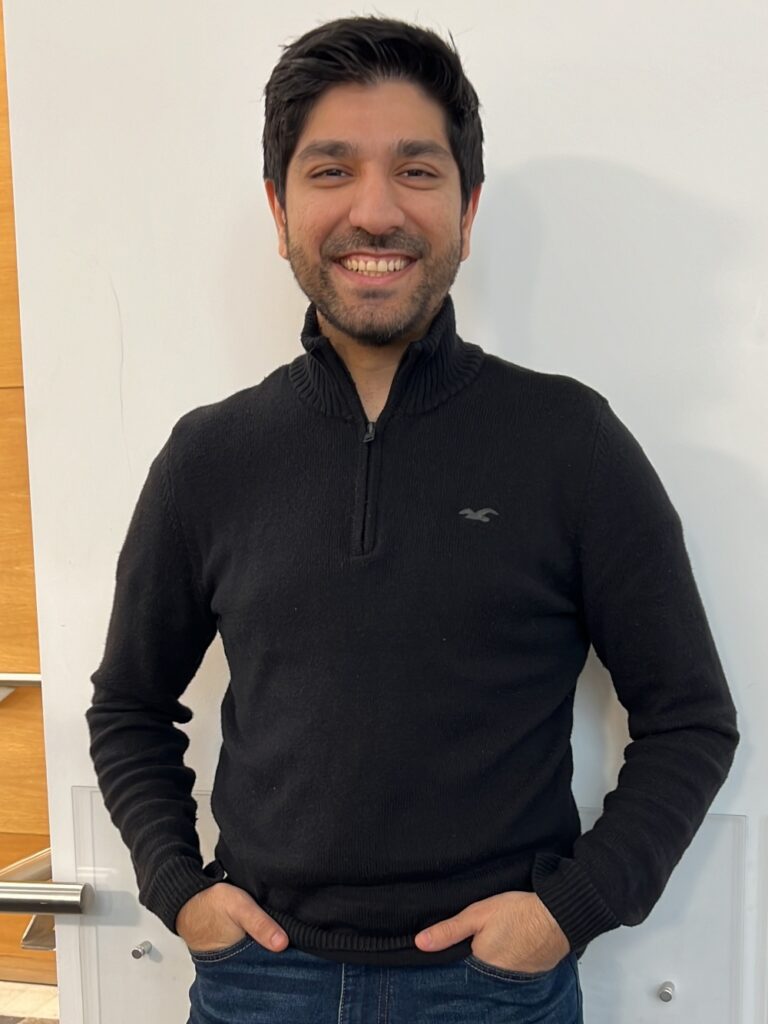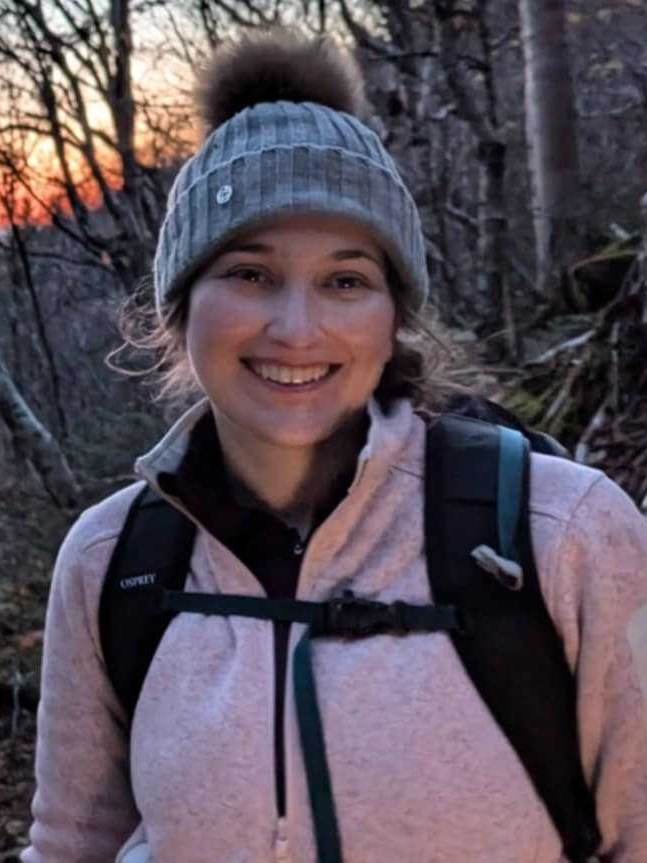
The Product Data team within our Platform Services and Emerging Technologies (PSET) organization creates the tools and services that unlock our customers’ design and make data, allowing it to flow seamlessly between Autodesk applications and providing secure access from anywhere, at any time. This work enables true collaboration across the disciplines and industries that make our world, empowering our customers to do more with sustainable impact and create better opportunities through insight and automation.
Meet a few members of the PSET Product Data team:

Irfan Khan is a Senior Developer and hybrid employee based in Toronto, Canada. In his role, he builds software development kits (SDKs) that help Autodesk applications like Revit and Fusion connect with platform services. This makes it easier for applications to send and receive data by handling the technical details, so developers can focus on working with their data. He also develops features for the asset graph data model service, which organizes and stores application data using graph databases. In his free time, he loves reading and collecting comic books and stays active by playing a variety of sports like hockey, tennis, and volleyball.
Katia Ruhlin is a Senior Software Developer and hybrid employee based in Montreal, Canada. In her role, she works for the backend team that enables the Autodesk cloud granular data model to enable the transformation of Revit files. She also writes the code that deals with writing and reading this granular data into the cloud storage. Outside of work, she likes to switch up hobbies and try new things. Recently, she has gotten into backcountry skiing and learning to snowboard. She also loves traveling, cooking, and hosting themed dinner parties for her friends.


Neeraj Charokar is a Software Engineer and hybrid employee based in Pune, India. In his role, he works on the Concurrent Editing team, primarily focusing on development and maintaining servers. Due to the unique nature of the project, he’s also had the opportunity to work closely with and contribute to Microsoft open-source projects. In his free time, he loves traveling across the country, and as a foodie who enjoys exploring local flavors, his trips always include a food walk. When he’s not traveling, he loves spending time gaming on his PS5.
Can you tell us a little about your team?
Katia: My team is working on the very base of Autodesk Platform Services, which is the data model itself. We are responsible for ensuring the data we store is accurate, and that the system has high availability for writing and reading the data. With a standard data model that can be reused across different Autodesk products and linked across different projects, we enable extracting useful information from designs made through Autodesk products that wouldn’t otherwise be available.
One very interesting use of the work I am contributing to is the sustainability measures of Revit designs. In one presentation, a Product Manager showed how our granular data models support queries that can give information about a building’s carbon footprint. In the past, it was hard to compute such a measure, but with the work we are doing at Autodesk, we are helping support better decision-making that affects the construction industry, which is one of the higher contributors to the global carbon footprint.
Irfan: We build and maintain the asset graph data service, which enables applications to transition from file-based storage to a more flexible, granular data model. This makes data easier to access, query, and scale while ensuring consistency and better management. It also improves collaboration with multi-user access, enhances security with fine-grained controls, and integrates smoothly with other services.
Teams can work on designs together without the risk of overwriting changes or managing multiple file versions, reducing costly mistakes. With better access to data, users can also analyze designs more easily, make informed decisions, improve their workflows, and visualize their data. Overall, it simply makes working on complex design applications more seamless and powerful.
Neeraj: The Concurrent Editing team enables real-time collaboration in our applications by providing both client- and server-side support. Our work powers unique use cases, including VR-related technology and some components in AutoCAD. We empower futuristic technologies like VR and real-time collaboration, allowing users to access their data in unprecedented ways and streamline their work that once required significant effort, time, and investment.
What are some of the best things about working at Autodesk where you live?
Irfan: The Toronto office is located inside the largest urban innovation hub right in the heart of downtown. It’s a spacious, bright workspace with great perks like free coffee and snacks, game rooms, Lego stations, relaxation rooms, and amazing window views. There’s always something happening, from info sessions and social mixers to arts and crafts, game nights, and other fun activities. It’s a great place to work, meet people, and be part of a lively and creative environment!
Neeraj: The best things about working at Autodesk Pune are its vibrant culture, delicious food, and pleasant climate. Additionally, the gatherings and outings — both at the office and around the city — provide great opportunities to connect with people and truly experience the beauty of Pune.
Katia: In addition to the Montreal office just being a really cool building (it is a historical ship repair and assembly building in the old port of Montreal), we also have so many work events where we get to extend our social circle beyond our direct teammates. That includes volunteering, summer barbecues, and even curling games.
Why is it an exciting time to work in the PSET Product Data organization?
Neeraj: In the PSET Product Data organization, we primarily work with emerging technologies and operate at the core of many products, presenting both challenges and valuable learning opportunities. As we continue to drive towards cloud and data-centric solutions, these opportunities will only expand further.
Katia: When Autodesk Platform Services started the project I work on roughly five years ago, it only supported one Autodesk product; now, we are expanding into more products and support for more regions worldwide. With that experience and many lessons learned, we are revamping our backend architecture to better prepare ourselves for the amount of granular data we will need to support more products, customers, and regions. The complexity and scale of the project are very interesting, and I learn something new every day. My team is made up of extremely talented developers who support me and foster a sense of collective success, which is very motivating.
Irfan: We are ambitiously innovating and creating many new services that will make working with design data powerful. There is a lot of collaboration within our teams, finding new opportunities to leverage the platform and bring value to our customers. There are also incentives for everyone to innovate through various hackathons, even trying to creatively build something using our platform services. I’ve learned a lot in the three years I’ve been working here, and I am only even more excited about the roadmap going forward – I can’t wait.
Interested in joining the PSET Product Data team at Autodesk?